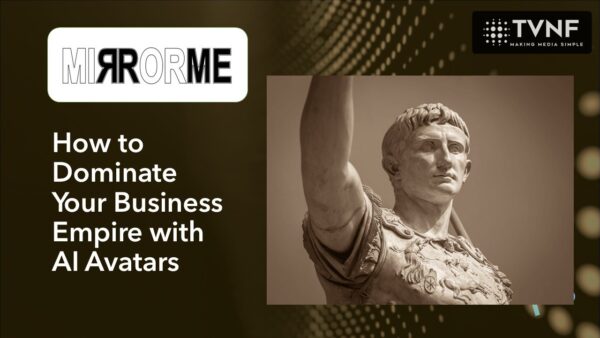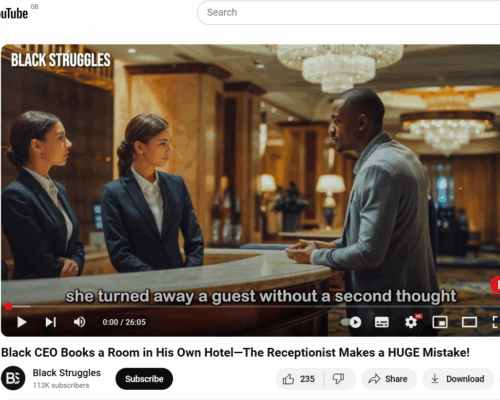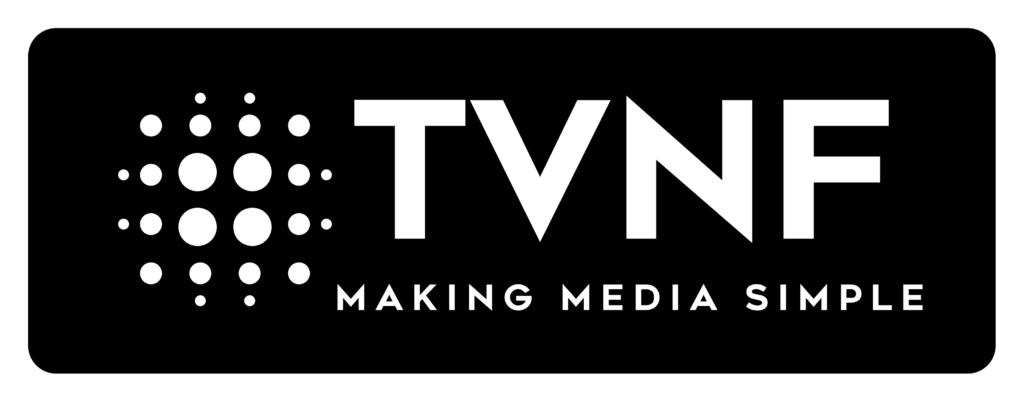How to Dominate Your Business Empire with AI Avatars

For millennia, rulers of empires relied on public self-imagery to project authority. Coins with their crowned heads stamped, statues of emperors, carved in marble, dotted city squares, unmissable, omnipresent, and immortalised, visible even today. These tangible representations weren’t merely decorative; they served as powerful tools for establishing a direct relationship with their subjects, impressing allies and enemies alike - even if they’d never met them in person.
Fast-forward to the modern era, the need for business leaders to project authority and build trust remains unchanged. In our fast-paced, hyper-connected world, the challenge is how to maintain impact and influence across multinational organisations with thousands of employees and stakeholders spread across the globe. There’s a new solution emerging called AI Avatars, a digital twin that is surely the modern-day successor to statues and coins. It can generate the most personalised corporate messages without you needing to be filmed. Simply send a proofread script to a specialised AI-managed service like MirrorMe, and your very own avatar delivers the perfect presentation and will make you truly omnipresent. Here’s how this game-changer saves time and costs for any major business and, at the same time, helps remove major risks that destroy even the largest companies in the world.
The True Cost of Creating Corporate Leadership Videos
Picture this: You’re the CEO of a multinational corporation overseeing teams, offices, and markets across the world. Regular communication is essential, but the time spent crafting and delivering high-profile messages is daunting. Filming a polished video announcement often requires hours, if not days, of not just your time but your communications team's and your in-house media department's or contract videographers' time. Media interviews, annual shareholder meetings, and employee town halls - each demands countless hours of preparation, production, postproduction, and practice.
Studies show that top CEOs spend an average of 5% of their working hours on media engagement, much of which involves filming and delivering messages.
For a 60-hour workweek, that translates to three hours each week dedicated solely to cameras, scripts, and production. Employee town halls for large organisations can stretch over days of preparation, especially when multilingual messages need to be tailored for diverse audiences.
The production cost for even short regular corporate videos is high. FTSE CEOs earn an average of £4.2M and work 62.5 hours a week, based on a study by Harvard Business School. This equates to 12.5 hours a day and, given 4 weeks holiday, 3,000 hours per year. Discounting weekends and bank holidays in England and Wales, this equates to an hourly pay of £1,298 per hour.
They spend 5% of their time creating media for Press and PR, town hall meetings, conferences, customers, and investors at a direct cost of £194K.
This is just their time and does not account for the team that is always involved in supporting each video nor take into account the even larger hidden cost of missed opportunities from being prevented from doing other mission-critical work whilst executive invest their valuable time on camera.
The result is that, except for the richest and largest companies, we still see poor adoption of the most powerful media, which is personalised corporate video messages. With limited visibility, the executive team risks becoming strangers within their own companies. Without the power to inspire and effect major change, they will risk losing control, and the rot can set in. Here are two classic examples of the disasters that can unfold:
The Risk and Cost of Not Being Omnipresent
Example 1: Failed Merger & Acquisition
Back in 2000, as a Global Vice President for IT, I witnessed the rapid collapse of a UK Telco giant. The first DotCom boom had given them hundreds of millions of dollars to acquire ISPs around the world. The leadership sat aloof in London, relying on memos to fuse disparate teams across the world into a unified team from Washington to Tokyo and across Europe. The battle to win hearts and minds and bring unification was immense. The Japanese acquisition felt left out and compromised. I was asked to fly out to Japan to stop our Asian subsidiary from mounting an insurrection that would have sabotaged our plan to integrate IT with SAP and get a grip on the acquisitions. In a matter of 12 months, the key staff, including the best salespeople and technicians of the newly acquired companies, had exited. This massively reduced the Company’s forecast earnings. The Company suffered the humiliation of revealing results to the City of what had quickly become a vastly overvalued stock, and its share price tanked overnight, thousands of employees were fired, and the company was broken up.
Example 2: Failure to Influence Staff Culture
There are dozens of stories of Billionaire owners of hotels who are denied rooms in their very own hotels due to discrimination. Their own staff failed to recognise them. After suffering such poor treatment, one such CEO then found over 200 similar cases. This led him to fire the receptionist and the Hotel manager and compensate all the guests who had been badly treated. He then embarked on an international exercise to rescue his hotel chain, to root out and prevent a repeat of problems and try to change staff culture and behaviours.
The Digital Twin Revolution
Implementing corporate AI avatars produced at a professional level, like MirrorMe, could probably have helped avoid these disasters. These avatars replicate a CEO’s appearance, voice, and mannerisms with remarkable authenticity, enabling leaders to deliver personalized messages without being tethered to filming schedules. The possibilities are limitless. The savings and gains in executive productivity present an open and shut case to invest in next-generation Digital Twins as spokespersons with business communications that will dominate attention, influence, and transform any business. Even for mid-sized organisations, it's easy to calculate how the overhead cost and stress of doing essential regular high-quality personalised corporate media for just a handful of the leadership team can mount up. A case in point is one of our very first clients, a major international technology company that acquired several companies across the UK. They have commissioned MirrorMe to enable all five Board Members to issue monthly Board updates to all staff. Their aim is to win the hearts and minds of the newly acquired staff, to build familiarity with the values of the company, and to rapidly build a sense of inclusiveness, team spirit, and motivation to mitigate against the risk of alienation and poor onboarding of newly acquired staff leaving and joining competitors. This is just the beginning, and they plan to extend AI Avatars in other key parts of their business, such as account management and customer services. Each month, they are guaranteed to save hours of valuable time so they can concentrate on more important things than smiling on camera.
AI avatars can speak dozens of languages fluently, allowing leaders to address employees or stakeholders in their native tongue - from Japanese in Tokyo to Spanish in Buenos Aires or German in Berlin. Beyond breaking language barriers, they eliminate geographical constraints, enabling CEOs to "attend" multiple events simultaneously or deliver pre-recorded tailored speeches for diverse audiences.
Example 3: AI Digital Twin speaking fluent Hindi: MY HINDI AI AVATAR
The Secret to Success with Implementing AI Avatars for Corporate Communications
The first essential requirement is hyper-realism. DIY Avatar services such as Heygen and Synthesia fail to hit the mark. They are too crude and just limited to talking heads without important media elements such as animations, branding, and professional postproduction.
The final challenge is how to prevent Deepfakes. I recently wrote an article about this growing threat. See
Countering CEO Deep Fake Fraud
The good news is that advanced blockchain security measures ensure that these avatars can be made "fake-proof" and accompanied by Blockchain certificates that are trustworthy, protecting their credibility and safeguarding their messages.
Conclusion
Digital avatars aren’t merely time-savers—they revolutionize the way leaders connect with their organizations. Just as emperors used their likenesses to unify their empires, AI avatars enable business leaders to foster a sense of presence and engagement, even from thousands of miles away. Employees feel appreciated when addressed in their languages, and investors are reassured by clear, personalized communication. This leads to deeper trust, stronger relationships, and a reinforcement of the leader’s vision.
In a world where personalization is key, secure AI avatars are rapidly becoming indispensable tools for modern leadership. They bridge the gap between human authenticity and technological efficiency, offering Business Leaders a powerful way to inspire, connect, and influence on a global scale. They also free senior executives from the time, cost, and stress of more than 90% of the workload needed to create corporate video communications across every aspect of their business.
So, while today’s leaders may not be immortalized in marble or on coinage, they now have something even more impactful: hyper-realistic virtual twins that can appear anywhere, speak any language, and lead with authority and presence to change the culture and exert influence at will. Perhaps even the most successful kings and emperors of old would be jealous if they could see the future of how to become an omnipresent leader!


